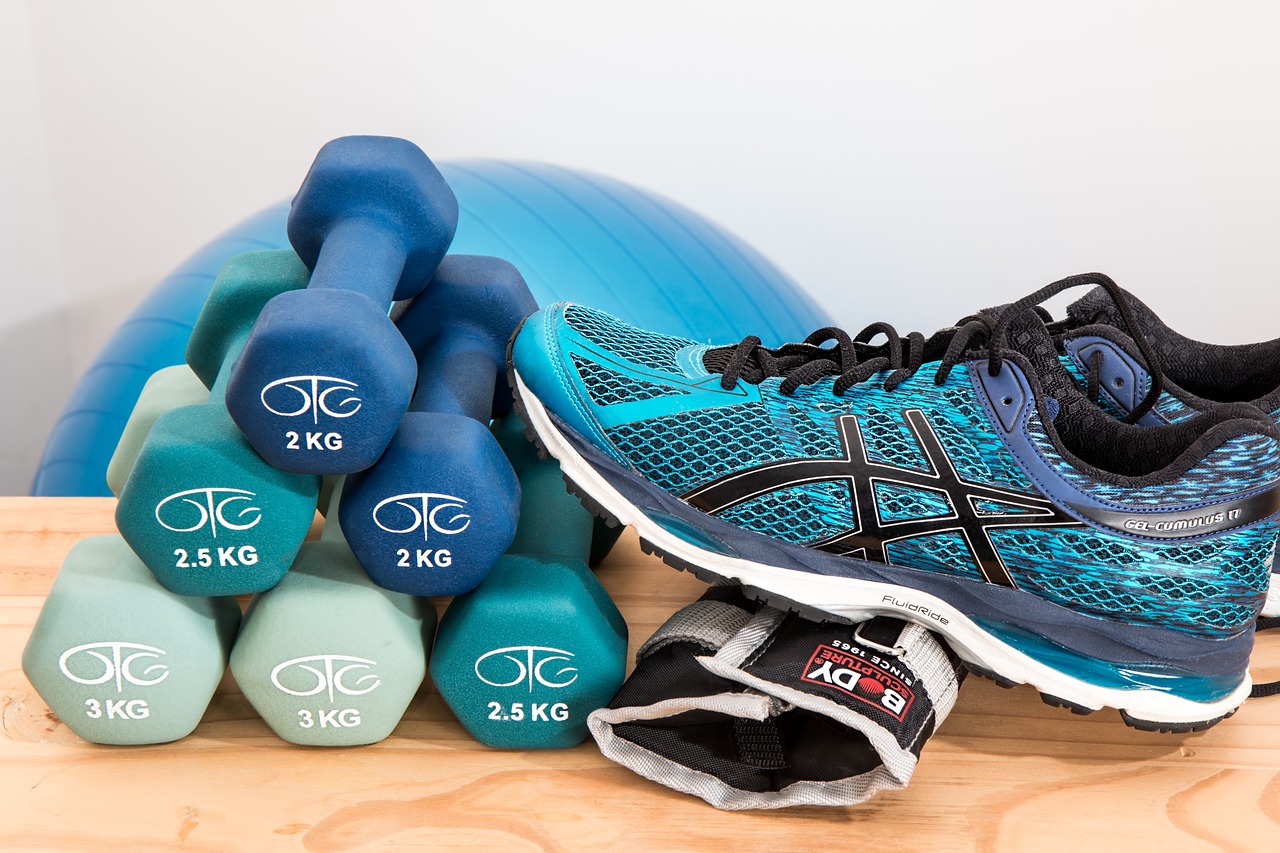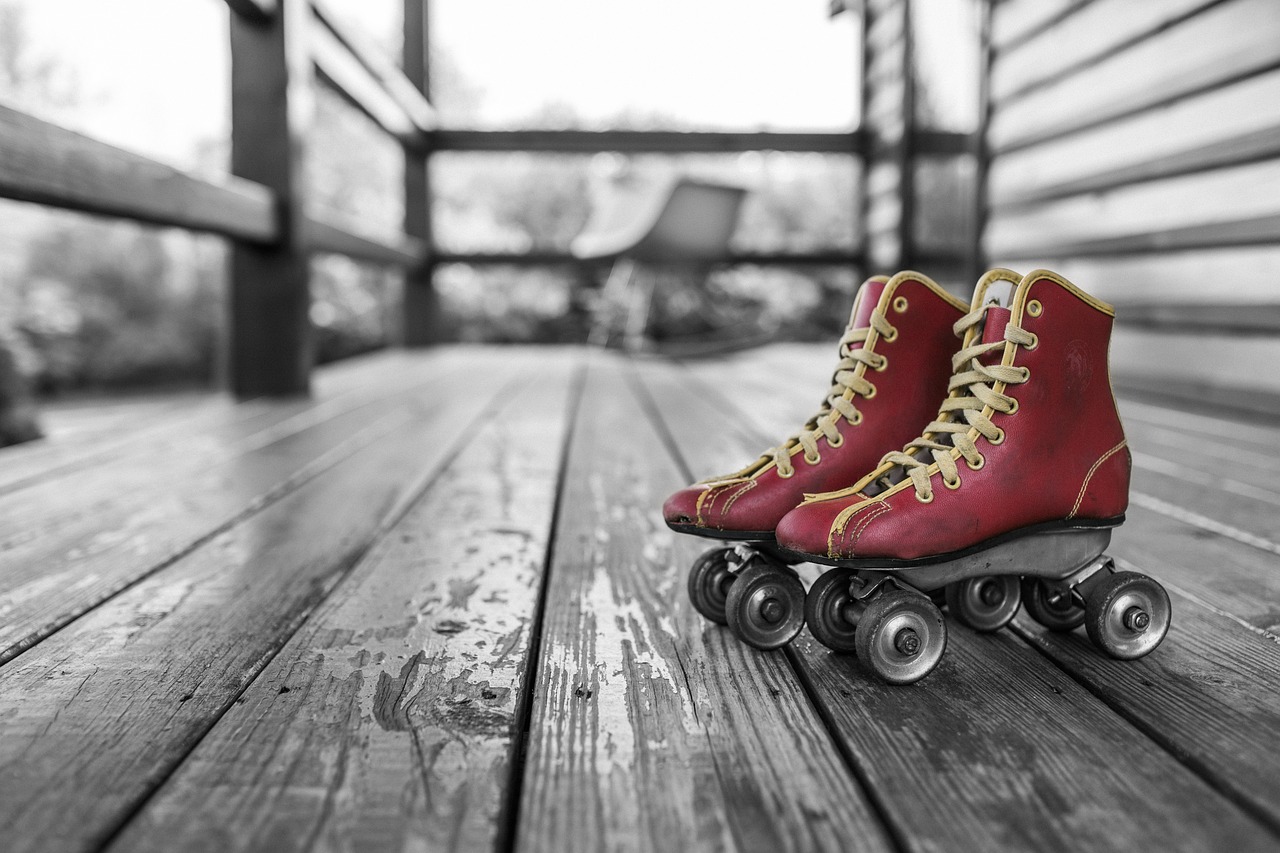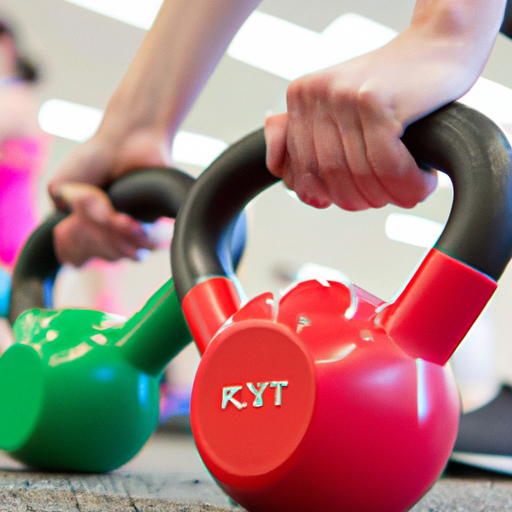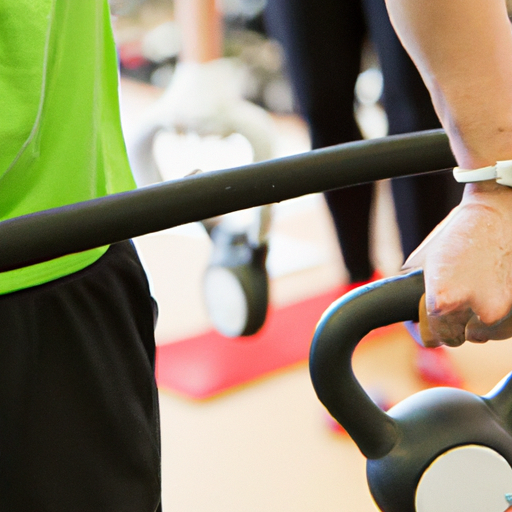If you’ve been longing to build muscle but don’t have access to a gym or weights, fret not! This article will show you simple and effective ways to increase your muscle mass without the need for heavy equipment. From bodyweight exercises to resistance bands, we’ll explore a variety of techniques that will help you achieve your fitness goals right at home. Get ready to feel stronger and more confident as you discover how to build muscle mass without weights!

This image is property of pixabay.com.
Understanding the Basics of Muscle Building
The role of resistance in muscle building
When it comes to building muscles, one of the key factors is resistance. Resistance refers to the force that your muscles need to overcome in order to perform an exercise. This resistance can come from various sources, such as weights, resistance bands, or even your own body weight. When your muscles encounter resistance during exercise, it causes microscopic damage to the muscle fibers. As these fibers repair themselves, they become thicker and stronger, resulting in muscle growth.
Difference between muscle mass and muscle strength
Muscle mass and muscle strength are often used interchangeably, but they are actually two different aspects of muscle development. Muscle mass refers to the size of your muscles, while muscle strength refers to their ability to generate force. While both are important, they can be developed independently. You can have large muscles without necessarily having great strength, and vice versa. However, focusing on both muscle mass and strength will result in a well-rounded and functional physique.
The importance of protein in muscle growth
Protein plays a crucial role in muscle growth and repair. When you exercise, your muscles undergo a process called protein turnover, where the rate of protein synthesis is increased to repair the damage caused by exercise. In order to support this process and promote muscle growth, it is important to consume an adequate amount of protein in your diet. Good sources of protein include lean meats, poultry, fish, eggs, dairy products, legumes, and tofu. Aim for a protein intake of around 1.2 to 2 grams per kilogram of body weight per day to support muscle growth.
Bodyweight Exercises for Muscle Building
Push-ups for chest and arm muscles
Push-ups are a classic bodyweight exercise that target the muscles in your chest and arms. To perform a push-up, start by getting into a plank position with your hands directly under your shoulders. Lower your body down by bending your elbows, keeping your body in a straight line, until your chest almost touches the ground. Push back up to the starting position, fully extending your arms. By varying your hand placement and body position, you can target different areas of your chest and arms, making push-ups a versatile exercise for muscle building.
Squats for leg muscles
Squats are a compound exercise that target multiple muscle groups, including the quadriceps, hamstrings, glutes, and calves. To perform a squat, stand with your feet shoulder-width apart, toes slightly turned out. Lower your body down by bending your knees and pushing your hips back, as if you’re sitting back into a chair. Aim to lower yourself until your thighs are parallel to the ground, or as low as your flexibility allows. Push through your heels to return to the starting position. Squats can be modified by using a wider or narrower stance, or by adding weight to increase the intensity.
Pull-ups for back and shoulder muscles
Pull-ups are a challenging exercise that primarily target the muscles in your back and shoulders. To perform a pull-up, start by gripping a pull-up bar with your palms facing away from you, hands slightly wider than shoulder-width apart. Hang from the bar with your arms fully extended. Pull your body up by engaging your back muscles and squeezing your shoulder blades together, until your chin is above the bar. Lower yourself back down with control. If you’re unable to perform a full pull-up, you can start with assisted variations or use resistance bands to gradually build up your strength.
Crunches for abdominal muscles
Crunches are a popular exercise for targeting the muscles in your abdomen. To perform a crunch, lie on your back with your knees bent and feet flat on the ground. Place your hands behind your head or cross them over your chest. Engage your abdominal muscles and lift your shoulders and upper back off the ground, curling towards your knees. Keep your lower back on the ground throughout the movement. Slowly lower yourself back down to complete one repetition. To increase the difficulty, you can try different variations such as bicycle crunches or reverse crunches.
Progressive Exercises to Increase Intensity
Adding more repetitions over time
One of the simplest ways to progressively increase the intensity of your bodyweight exercises is to add more repetitions over time. Start with a comfortable number of repetitions that you can perform with good form. As you get stronger, gradually increase the number of repetitions. This progressive overload challenges your muscles and stimulates further growth. Keep track of your progress and aim to increase your repetitions every week or so, within a range that challenges you but doesn’t compromise your form.
Incorporating advanced techniques into your routine
Once you’ve built a solid foundation with basic bodyweight exercises, you can incorporate advanced techniques into your routine to further increase the intensity. These techniques include exercises like pistol squats, handstand push-ups, one-arm push-ups, and muscle-ups. These exercises require greater strength, stability, and coordination, and can take your muscle-building efforts to the next level. However, it is important to master proper form and have sufficient strength before attempting these advanced exercises.
Increasing exercise volume
Another way to increase the intensity of your bodyweight exercises is by increasing the exercise volume. This refers to the total number of sets and repetitions that you perform in a workout. By adding additional sets or increasing the number of repetitions in each set, you can challenge your muscles to adapt and grow. Gradually increase your exercise volume over time, but listen to your body and avoid overtraining. It’s important to find the right balance between pushing yourself and allowing for proper rest and recovery.
Importance of Proper Form and Technique
Avoiding injuries through proper form
When engaging in any form of exercise, including bodyweight exercises, it is crucial to prioritize proper form and technique. Performing exercises with incorrect form not only decreases the effectiveness of the exercise but also increases the risk of injuries. Take the time to learn and practice the proper form for each exercise. Focus on maintaining a neutral spine, engaging the correct muscles, and using fluid and controlled movements. If you’re unsure about your form, consider working with a knowledgeable trainer or coach who can provide guidance and corrections.
Enhancing muscle engagement by focusing on form
Proper form goes hand in hand with maximizing muscle engagement during exercises. By focusing on maintaining correct alignment and form, you can ensure that the targeted muscles are being effectively stimulated. For example, when performing squats, keeping your knees in line with your toes and maintaining a neutral spine will maximize the engagement of your leg muscles. Additionally, proper form can help prevent compensatory movements and imbalances, which can lead to muscle imbalances and potential injuries.
Common form mistakes to avoid
While proper form is important, it’s also essential to be aware of common form mistakes and avoid them. Some common mistakes in bodyweight exercises include rounding the back during push-ups or squats, arching the lower back during crunches, and using momentum instead of controlled movement. These mistakes not only reduce the effectiveness of the exercise but also put unnecessary stress on the joints and increase the risk of injury. Pay attention to your form and make necessary adjustments to ensure that you’re performing exercises correctly and safely.

This image is property of pixabay.com.
The Role of Nutrition in Muscle Building
The best food choices for muscle growth
When it comes to building muscles, proper nutrition is just as important as exercise. To support muscle growth, it is crucial to provide your body with the right nutrients. Include a variety of nutrient-dense foods in your diet, including lean proteins, such as chicken, turkey, fish, tofu, and Greek yogurt. Get plenty of complex carbohydrates from whole grains, fruits, and vegetables to fuel your workouts. Don’t forget healthy fats, such as avocados, nuts, and olive oil, which provide essential nutrients and support overall health. Aim for a well-balanced diet that includes all the necessary macronutrients and micronutrients for optimal muscle growth.
Monitoring calorie intake
To build muscle, you need to consume an adequate amount of calories to support your body’s energy needs and the demands of muscle repair and growth. However, it’s important to strike a balance and avoid excessive calorie intake, which can lead to unwanted fat gain. Calculate your daily calorie needs based on your activity level, age, gender, and goals, and adjust accordingly. Pay attention to portion sizes and aim to eat small, frequent meals throughout the day to maintain a steady supply of nutrients for muscle growth.
Importance of hydration
Hydration is often overlooked but plays a crucial role in muscle building. Water is involved in various physiological processes, including muscle contractions and nutrient delivery to the muscles. Dehydration can negatively impact performance and recovery. Aim to drink enough water throughout the day, especially before, during, and after your workouts. The exact amount of water needed varies depending on factors such as activity level, climate, and individual needs. Listen to your body and hydrate accordingly to support optimal muscle growth.
Timing meals for maximum muscle growth
In addition to what you eat, when you eat can also impact muscle growth. Fueling your body with the right nutrients at the right times can optimize muscle repair and growth. To support muscle recovery post-workout, it’s important to consume a combination of protein and carbohydrates within 30 to 60 minutes after exercising. This helps replenish glycogen stores and provides the necessary amino acids for muscle repair. Additionally, spreading your protein intake evenly throughout the day, rather than consuming it all in one meal, can maximize muscle protein synthesis.
Rest and Recovery for Muscles
Understanding muscle recovery post-workout
Rest and recovery are crucial components of any muscle-building program. When you exercise, you create small tears in your muscle fibers, and it is during the rest and recovery period that these fibers repair and grow stronger. Adequate rest allows your body to replenish energy stores, reduce muscle soreness, and prevent overuse injuries. Give your muscles at least 48 hours of rest between workouts targeting the same muscle group to allow for optimal recovery and growth.
The role of sleep in muscle recovery
Sleep is often overlooked, but it is an essential part of the muscle recovery process. During sleep, your body produces growth hormone, which is crucial for muscle repair and growth. Lack of sleep can negatively impact athletic performance, recovery, and muscle gain. Aim for 7 to 9 hours of quality sleep each night to support optimal muscle recovery. Establish a consistent sleep schedule, create a relaxing bedtime routine, and create a sleep-friendly environment to enhance the quality of your sleep.
Importance of rest days in muscle building
While it can be tempting to push yourself to exercise every day, rest days are just as important as workout days. Rest days allow your muscles to recover, repair, and grow stronger. Overtraining or not allowing enough rest can actually hinder your progress and increase the risk of injury. Incorporate rest days into your workout routine, where you focus on restorative activities such as stretching, foam rolling, and gentle cardiovascular exercises. Listen to your body and give yourself permission to rest when needed. Remember, muscles grow during periods of rest, not just when you’re working out.

This image is property of pixabay.com.
A Complete Muscle Building Routine Without Weights
Sample routine for beginners
If you’re new to bodyweight exercises and muscle building, it’s important to start with a simple and beginner-friendly routine. Begin with a warm-up that includes dynamic stretching and mobility exercises to prepare your body for the workout. Then, perform a combination of bodyweight exercises targeting different muscle groups, such as push-ups, squats, pull-ups (assisted variations if needed), and crunches. Aim for 2 to 3 sets of each exercise, with 8 to 12 repetitions per set. As you progress, gradually increase the number of sets and repetitions, or move on to more advanced exercises.
Workout plans for intermediate level
Once you’ve mastered the basic exercises, you can progress to an intermediate level routine. This routine can include more challenging variations of the exercises, such as diamond push-ups, pistol squats, pull-ups, and bicycle crunches. Incorporate more sets and repetitions into your routine, and aim to increase the intensity by reducing rest times between sets or adding supersets. It’s also a good idea to incorporate additional exercises that target specific muscle groups, such as tricep dips, lunges, and planks. Listen to your body and adjust the intensity and volume as needed.
Advanced routine for muscle mass
For those looking to maximize muscle mass without weights, an advanced routine can help you achieve your goals. This routine can include exercises such as one-arm push-ups, handstand push-ups, explosive jump squats, muscle-ups, and hanging leg raises. Increase the number of sets and repetitions, and incorporate advanced techniques such as drop sets or rest-pause sets to further challenge your muscles. Consider working with a certified trainer or coach to ensure proper form and technique, as well as to design a program that suits your specific needs and goals.
Adjusting routines for muscle balance
When focusing on muscle building, it’s important to maintain muscle balance by targeting all major muscle groups. Neglecting certain muscle groups can lead to imbalances, which can affect your posture, performance, and increase the risk of injuries. Make sure to include exercises that target all major muscle groups, including the chest, back, shoulders, arms, legs, and core. If you have muscle imbalances or specific areas you want to focus on, you can adjust your routine to include additional exercises that target those areas.
Keeping Track of Your Progress
Importance of documentation
Keeping track of your progress is essential for staying motivated and assessing your muscle-building journey. Documenting your workouts allows you to see how far you’ve come and identify areas where you can improve. Keep a workout journal or use a fitness app to log your exercises, sets, repetitions, and any notes about difficulty or modifications. This record can help you track your progress over time, identify patterns, and make adjustments to your routine as needed.
Measuring muscle growth and fat loss
In addition to tracking your workouts, it’s important to measure your muscle growth and fat loss to get a comprehensive picture of your progress. Take body measurements, such as your waist, hips, and thighs, regularly to track changes in body composition. Pay attention to how your clothes fit and how you feel in your body. While the scale can be a useful tool, it’s important to remember that muscle weighs more than fat, so focusing solely on the number on the scale may not provide an accurate reflection of your progress.
Adapting your plan as you progress
As you continue on your muscle-building journey, it’s important to adapt your workout plan to keep challenging your muscles and avoiding plateau. Gradually increase the intensity, volume, or difficulty of your exercises to continue stimulating muscle growth. Incorporate new exercises or variations to target different muscle groups and prevent boredom. Listen to your body and adjust your plan as needed, whether it’s adding more rest days, reducing workout frequency, or consulting with a trainer or coach for guidance.

Common Mistakes in Muscle Building Without Weights
Ignoring warm-up and cool-down
One common mistake in muscle building without weights is neglecting warm-up and cool-down exercises. Warm-up exercises, such as dynamic stretching, help prepare your muscles for the upcoming workout by increasing blood flow and warming up the muscles and joints. Cool-down exercises, such as static stretching, help relax the muscles and prevent post-workout stiffness. Neglecting these important elements can increase the risk of injuries and hinder your muscle-building progress. Make sure to allocate time for proper warm-up and cool-down exercises before and after each workout session.
Focusing only on one part of the body
Another common mistake is solely focusing on one part of the body and neglecting others. Building a well-rounded and balanced physique requires targeting all major muscle groups. Instead of solely focusing on building a particular muscle group, incorporate exercises that target different areas of the body. This not only helps maintain muscle balance but also improves overall functional strength and prevents muscle imbalances that can lead to injuries.
Not giving enough attention to nutrition
Proper nutrition plays a vital role in muscle building, regardless of whether you’re using weights or not. Many people make the mistake of not giving enough attention to their nutrition, which can hinder muscle growth. Make sure to consume an adequate amount of protein, carbohydrates, and healthy fats to support muscle repair and growth. Hydration is also essential for optimal muscle function and recovery. Pay attention to your nutrient intake and consider working with a registered dietitian or nutritionist to ensure you’re meeting your specific dietary needs.
Overtraining
While building muscle requires consistent and challenging workouts, overtraining can be counterproductive and detrimental to your progress. Overtraining occurs when you don’t allow enough time for rest and recovery, pushing your body beyond its limits. This can lead to muscle fatigue, increased risk of injuries, decreased performance, and hindered muscle growth. Listen to your body and pay attention to signs of overtraining, such as persistent fatigue, decreased motivation, and decreased performance. Incorporate rest days into your workout routine and allow your muscles time to recover and repair.
Making Muscle Building a Lifestyle
Staying motivated through setbacks
Building muscle without weights is a journey that requires consistency and dedication. However, setbacks and challenges are inevitable along the way. It’s important to stay motivated and focused on your goals, even when faced with obstacles. Set realistic goals, celebrate small victories, and remind yourself of why you started this journey in the first place. Surround yourself with a supportive community, whether it’s friends, family, or like-minded individuals, who can provide encouragement and accountability. Stay positive and remember that progress takes time and effort.
Incorporating muscle-building activities into daily life
Building muscle doesn’t have to be limited to structured workout sessions. Look for opportunities to incorporate muscle-building activities into your daily life. Take the stairs instead of the elevator, walk or bike instead of driving, or engage in recreational activities that challenge your muscles, such as hiking or swimming. Incorporating physical activity into your daily routine not only helps build muscle but also promotes overall health and well-being.
Living a muscle-friendly lifestyle
Lastly, making muscle building a lifestyle involves adopting healthy habits that support muscle growth and overall health. This includes prioritizing quality sleep, managing stress levels, and minimizing unhealthy habits like excessive alcohol consumption and smoking. Focus on nourishing your body with nutrient-dense foods and staying hydrated. Make self-care a priority by incorporating activities like stretching, meditation, or yoga into your routine to promote relaxation and recovery. By adopting a muscle-friendly lifestyle, you’re setting yourself up for long-term success in building and maintaining a strong and healthy physique.
In conclusion, building muscle without weights is completely achievable with the right mindset, knowledge, and dedication. By understanding the basics of muscle building, incorporating bodyweight exercises, progressively increasing intensity, focusing on proper form, prioritizing nutrition, allowing for rest and recovery, following a structured routine, tracking progress, avoiding common mistakes, and making it a sustainable lifestyle, you can create a well-rounded and strong physique. Remember, building muscle is a journey, and the key is consistency, patience, and enjoying the process. So get started and enjoy the benefits of a strong and healthy body!


